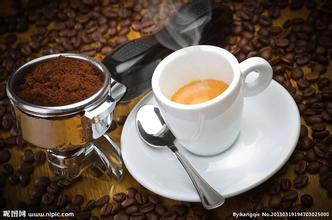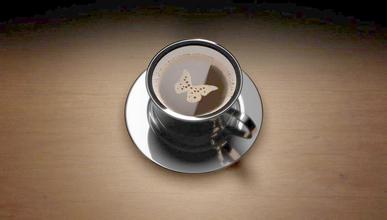The soft taste of Colombia coffee growing area Introduction to the Andes Hope Manor
The first estate that Herrera bought when he returned home was Trujillo's La Esperanza, which is very close to their grandfather's original farm and is now used as a regional headquarters. The manor itself is 100% organic, with a variety of coffee trees including Colombian species, Castillo, Caturra and more than 14000 organic roses. Next, Herrera bought four estates in Trujillo and Caicedonia, north of Trujillo. Together with the La Cardeida estate in Boquete, Panama, which was leased in 2005, it now has six estates and a total coffee planting area of 213 hectares.
Cafe Granja La Esperanza's estate is located in eight unique microclimate regions of the three Colombian mountains, giving their botanists an excellent opportunity to experiment with different microclimates and land flavors, different treatments, and different coffee varieties, combining the rationality of scientists, the sense of smell of businessmen and their insistence on the quality of coffee. For example, they create different treatment steps and norms for different microclimates and varieties. From seedling cultivation to export, there are 95 data points to manage all the data.
Hernando Tapasco's team, the lead botanist, set up a climate station on the estate to track weather data and help make harvest decisions. The data on the farm were collected continuously and analyzed once a week. After harvest, they will compare weather data, production data and cup test data and analyze the correlation. The harvesters of Rose Summer are strictly trained to collect only ripe cherry fruits and are paid by the day, unlike other manors by weight. In order to prevent workers from harvesting unqualified cherries in order to improve their performance, half of the harvesting workers have more than six years of experience. After the fruit is harvested, it will be sent to the central processing plant in Hope Manor, and each batch of rose will be marked and dealt with separately. First go through the drying stage three days ago in the sun field, and then move to the small tower to dry. Strict quality control is another key. There are 40, 000 to 45, 000 rose trees in Cerro Azul Manor, of which only 5-7000 can produce rose beans with the Cerro Azul brand.
The experiment and innovation of Hope Chateau on variety seems to be endless, constantly experimenting with different new varieties, in addition to the organic Kaddura, which used to make up the majority of the area of the Hope estate, from rose summer, organic rose summer, mocha, bourbon (including different red, yellow, Tekizik bourbon), pointed bourbon, Pakamara, San Bernardo and Pache, they really bring the chateau's serious attitude towards grape varieties to coffee. After the rose summer, from the Pacamara, Bourbon and even the pointed Bourbon produced by the Hope Manor, continue to create the surprise and admiration of the boutique coffee world.
In the naming of coffee, they like to label coffee products with the usual "Grand Cru" label of wine, and they also like to use "reserve" to distinguish top batches. For example, "AAA reverse Geisha" is used to refer to only two of the seven varieties in Cerro Azul, and it is also the most advanced, with the highest elevation (1800-2000 meters). According to the large amount of data and research accumulated by the manor, different forms will use different methods to give full play to the best flavor.
Their actions finally paid off. As early as the 2008 "Best Panama" competition, I hope that the La Cardeida rented by the manor will win the best Panama championship with a high score of 93.16. The Best Coffee Triple Crown in 2012 was won by the three main growers: Cerro Azul second, Las Magarita third, and Buenos Aires Experimental Manor seventh.

Important Notice :
前街咖啡 FrontStreet Coffee has moved to new addredd:
FrontStreet Coffee Address: 315,Donghua East Road,GuangZhou
Tel:020 38364473
- Prev

Introduction to Goddess Manor in Costa Rica Coffee Manor with unique strong Flavor
Costa Rican coffee has full particles, ideal acidity and unique strong flavor. Costa Rica's coffee industry, originally controlled by the Costa Rican Coffee Industry Company (InstitutodelCafdeCostaRica, ICAFE), has been taken over by the official Coffee Committee (OficinadelCaf). In the coffee exported, those products that are considered to be of substandard quality use blue.
- Next

Export situation of coffee producing countries in Papua New Guinea output introduction to Paradise Bird Manor in Wiki Valley
However, it is almost inevitable that the surge in production leads to a decline in quality. Before 1991, the quality of coffee was good, and most of it belonged to open Y and so on. After 1991, the quality gradually declined, and then the European market was lost.
Related
- Does Rose Summer choose Blue, Green or Red? Detailed explanation of Rose Summer Coffee plots and Classification in Panamanian Jade Manor
- What is the difference between the origin, producing area, processing plant, cooperative and manor of coffee beans?
- How fine does the espresso powder fit? how to grind the espresso?
- Sca coffee roasting degree color card coffee roasting degree 8 roasting color values what do you mean?
- The practice of lattes: how to make lattes at home
- Introduction to Indonesian Fine Coffee beans-- Java Coffee producing area of Indonesian Arabica Coffee
- How much will the flavor of light and medium roasted rose summer be expressed? What baking level is rose summer suitable for?
- Introduction to the characteristics of washing, sun-drying or wet-planing coffee commonly used in Mantenin, Indonesia
- Price characteristics of Arabica Coffee Bean Starbucks introduction to Manning Coffee Bean Taste producing area Variety Manor
- What is the authentic Yega flavor? What are the flavor characteristics of the really excellent Yejasuffi coffee beans?

